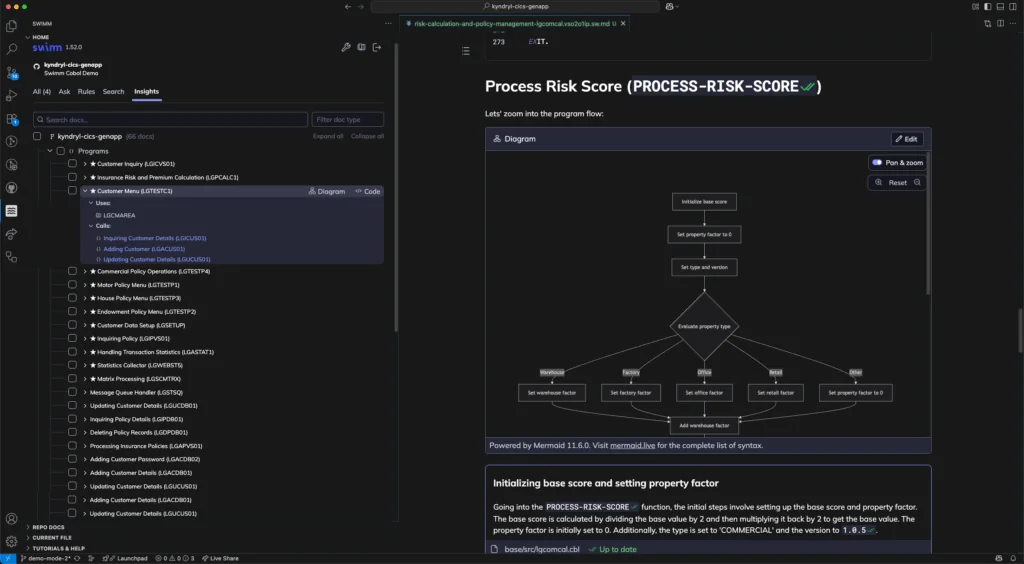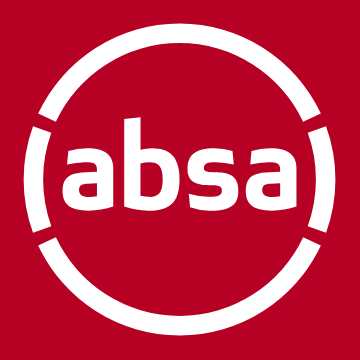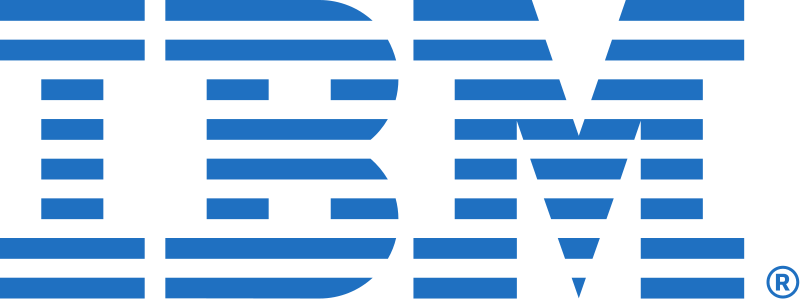What Is COBOL Business Rules Extraction?
COBOL Business Rules Extraction is the process of identifying and abstracting operational rules embedded within COBOL code. These business rules dictate how data is processed, decisions are made, and processes are executed in a legacy application.
This extraction is crucial for organizations aiming to understand, document, and potentially modernize their aging software systems. By identifying these rules, companies can ensure that their legacy systems’ functionality is preserved during migration or updates to newer platforms.
Legacy COBOL systems, used predominantly in banking, insurance, and government sectors, often have thousands of lines of code which embody complex business logic. Extracting business rules from these systems is essential as it allows for a clear understanding of the operations and functionalities embedded in the code. It also aids in the documentation process.
This is part of a series of articles about COBOL
The Importance of Extracting Business Rules from Legacy COBOL Systems
Extracting business rules from legacy COBOL systems is critical for several reasons. These systems often contain decades of institutional knowledge embedded in code. The rules they implement may not be documented elsewhere, making them the single source of truth for core business operations.
The original developers of these systems have often retired or moved on, creating a knowledge gap. Without clear documentation of the embedded rules, maintaining or updating the system becomes risky and error-prone. Rule extraction helps new teams understand the logic without needing to decipher the entire codebase.
Many organizations are moving toward modernization efforts, such as migrating to cloud platforms or adopting microservices. Accurate business rule extraction ensures that functionality is preserved during these transitions. It also enables re-implementation in modern languages and architectures, avoiding the need to replicate outdated patterns or technical debt.
Related content: Read our guide to COBOL modernization
Key Features of COBOL Business Rules Extraction Tools
Control Flow Graph (CFG) Generation
Control flow graph generation provides a structural map of all possible execution paths in a COBOL program. Each node represents a statement or block of code, and edges indicate the flow of control. This is especially useful for identifying where decisions and branches occur, such as IF-ELSE logic or PERFORM loops.
CFGs make it easier to isolate parts of the program that implement business logic. They also help in analyzing unreachable code, dead paths, or excessive branching, which can obscure business rules. Tools that generate CFGs typically support navigation and filtering, allowing analysts to focus on specific modules or transaction paths within large programs.
Business Rule Identification
Business rule identification extracts logic that directly represents domain-specific decisions, such as eligibility criteria, pricing formulas, or policy enforcement. Tools analyze control structures, data conditions, and expressions to recognize these rules, separating them from technical code like file I/O or screen handling.
Some tools employ static code analysis combined with domain modeling to recognize recurring rule patterns. They may also flag code that is likely a rule but lacks clear documentation, prompting human review. This capability is vital in large systems where business logic is deeply interwoven with procedural code and not always clearly separated.
Visualization and Reporting
Visualization translates technical rules into diagrams or text-based formats that make logic easier to interpret. Flowcharts help trace the logic of decisions across modules, while decision tables summarize rule combinations in a structured layout. Natural language summaries offer readable descriptions of what each rule does.
Reports may include detailed rule catalogs, cross-references to code locations, data lineage, and impact analysis. These outputs are often exportable to formats like PDF, Excel, or JSON for use in documentation, compliance reporting, or integration with business process modeling tools.
Integration with Development Environments
Integration with mainframe IDEs (like IBM Developer for z/OS) or modern platforms (like Eclipse or VS Code) ensures developers can access extracted rules within their workflow. This reduces context switching and accelerates understanding of unfamiliar code.
Some tools also provide APIs or plugins that allow rule data to be consumed by other systems, such as enterprise architecture tools or automated testing frameworks. This integration supports continuous modernization, enabling agile teams to refactor or rebuild components while preserving core business logic.
Support for Complex COBOL Structures
COBOL systems often use constructs like nested PERFORMs, GOTO statements, in-line copybook expansions, and redefined data fields. A capable tool must accurately parse and resolve these structures to extract meaningful logic.
This includes interpreting working-storage data definitions, resolving multi-level conditionals, and handling table lookups or indexed file access. Tools that understand these complexities are better equipped to recover complete, accurate business rules from real-world codebases, where logic is rarely cleanly separated or well-commented.
Notable Tools for COBOL Business Rules Extraction
1. Swimm
Swimm’s Application Understanding Platform helps solve one of the biggest challenges in modernization – the lack of understanding of existing applications.
Swimm is able to be deployed in highly secure environments and uses deterministic static analysis and generative AI to extract business rules in a proven, reliable and cost-effective way.
Key features include:
- Business rule extraction: Accurately extracts all the business rules and logic in the codebase.
- Architectural overviews: Finds and explains the component architecture of the application and breaks down programs, jobs, flows and dependencies.
- Natural language: Turns vague program and variable names into descriptive names for quickly understanding connections and flows.
- Customizable support: Supports complex and proprietary implementations of COBOL, CICS, and PL/I through language parsers and company specific plug-ins.
- Trust: Deterministic static analysis enables Swimm to eliminate LLM hallucinations and deliver insights across millions of lines of code.

2. Cobrix

Cobrix is an open-source tool that allows integration of COBOL/EBCDIC binary files into Apache Spark workflows. It is designed to enable querying COBOL-based mainframe data as Spark dataframes or streams without requiring deep COBOL expertise.
License: Apache-2.0
Repo: https://github.com/AbsaOSS/cobrix
GitHub stars: 100+
Contributors: 10+
Key features include:
- COBOL copybook support: Parses COBOL copybooks independently of Spark, enabling reuse in other data engines.
- Complex structure handling: Supports REDEFINES, OCCURS, DEPENDING ON clauses, nested arrays, and variable-sized structures.
- Spark integration: Allows binary COBOL files to be queried directly in Spark using DataFrame and SQL APIs.
- Storage options: Works with local file systems and distributed storage like HDFS and S3.
- Streaming support: Enables real-time processing of COBOL binary files using Spark Streaming.
3. Micro Focus COBOL Analyzer

Micro Focus COBOL Analyzer is a tool for understanding, analyzing, and documenting COBOL-based legacy systems. It provides a centralized environment where enterprise application assets—across COBOL, PL/I, Java, and C#—can be analyzed.
License: Commercial
Key features include:
- Centralized repository: Stores parsed application metadata in an industrial-grade DBMS, allowing consistent access across teams.
- Multi-language support: Enables cross-analysis of legacy (COBOL, PL/I) and modern (Java, C#) assets.
- Multiuser environment: Designed for collaboration across teams, supporting the exchange of analysis, documentation, and modernization insights.
- Non-invasive operation: Works directly with source files and metadata without modifying original code.
- Application-level analysis: Visualizes relationships between programs, copybooks, JCLs, and screen files.

Source: Micro Focus (Rocket)
4. IBM’s Rational Asset Analyzer

IBM Rational Asset Analyzer is a centralized analysis and inventory platform to provide insight into mainframe and distributed application assets. It helps organizations manage and modernize their software portfolios by identifying dependencies, capturing business rules, and analyzing the potential impact of changes.
License: Commercial
Key features include:
- Asset inventory: Collects and catalogs assets from mainframe and distributed environments, providing a unified view of software components and their interrelationships.
- Code dependency analysis: Analyzes source code to reveal structural and functional dependencies within and across applications.
- Web-based exploration: Allows team members to browse and navigate the inventory database through a browser interface.
- REST API access: Provides a REST interface for programmatically accessing asset data using standard URI-based queries.
- SQL and custom queries: Enables users to query the inventory database directly using SQL or create tailored reports using a built-in custom query tool.

Source: IBM
5. oneAdvanced Business Rules Extraction with Application Analyser
oneAdvanced Business Rules Extraction (BRX) with Application Analyser is a semi-automated solution for identifying, documenting, and visualizing business logic embedded within COBOL applications. BRX helps organizations uncover proprietary logic—such as calculations, conditions, and decisions—that often reside deep within legacy code and are undocumented elsewhere.
License: Commercial
Key features include:
- Business rule discovery: Uses user-defined criteria to identify potential business rules based on statement types and data sources within COBOL code.
- Heuristic rule identification: Applies weightings to candidate rules using semantic context, prioritizing conditions tied to external inputs like databases or screens over internal data.
- Semi-automated extraction process:Automates the discovery phase while keeping final rule validation in the hands of expert analysts to ensure relevance and accuracy.
- Natural language documentation: Allows each confirmed business rule to be documented in plain English alongside supporting code snippets.
- Process flow modeling: Generates visual models showing how transactions flow through the application, highlighting where business rules reside within programs.
Conclusion
Extracting business rules from COBOL systems enables organizations to retain critical operational logic while reducing reliance on outdated codebases. It supports clearer documentation, risk mitigation, and smoother transitions to modern platforms. By isolating and understanding embedded rules, teams can better align technology with evolving business needs and regulatory requirements.